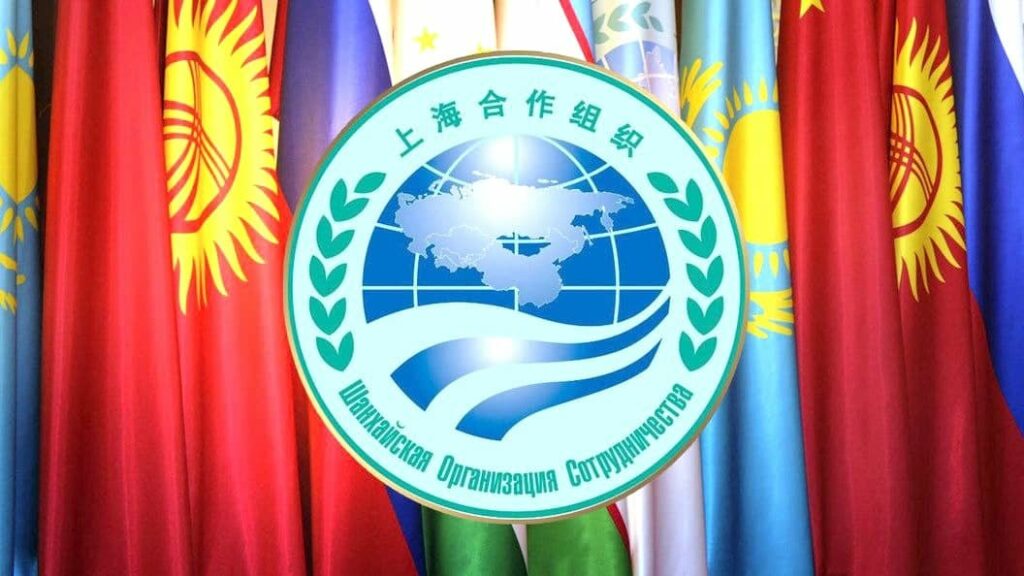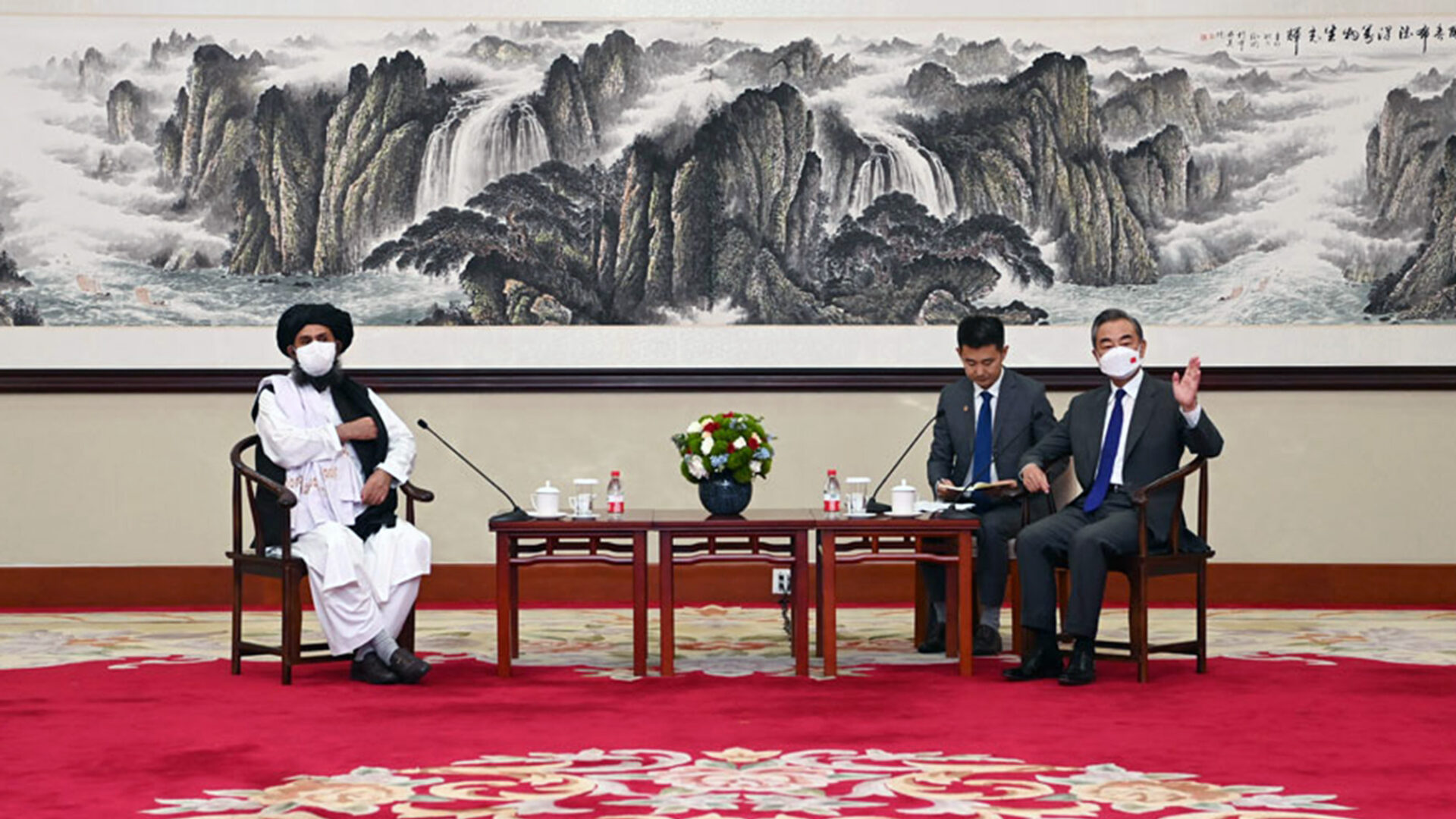The evaporation of the Afghan National Army and the collapse of a state carried at arm’s length by the United States and its allies will have surprised Russians, Chinese and Westerners alike. While many Russian commentators are showing a form of “Schadenfreude”, the situation that could result — i.e. the possible reconstitution in Afghanistan of a world-wide terrorist center, with repercussions throughout Central Asia — is of concern to Moscow and Beijing. However, the fear of Afghan disorder and the contagion of jihadism to Central Asia should not conceal the Russian desire to exploit the situation to return to the region in force. In that purpose, Moscow and Beijing may be able to overcome the Afghan problem by organizing a vast Sino-Russian Eurasia. In such a case, the global correlation of forces would be unfavorable to the West.
The meteoric nature of the Taliban advance, due to the evaporation of the Afghan National Army, and the collapse of an Afghan state carried at arm’s length by the United States and its NATO allies, will have come as a surprise to Russians, Chinese and Westerners alike. While many Russian commentators are showing a form of “Schadenfreude” (an unhappy joy), the situation that could result — i.e. the possible reconstitution in Afghanistan of a world-wide terrorist center, with repercussions in the whole of Central Asia — worries Moscow and Beijing, perhaps even more than the Western capitals. In the future, this part of the world will once again be the focus of attention of strategists and geopolitologists. It is therefore necessary to establish the terms of the regional geopolitical equation.
Lato sensu, Central Asia can refer to all the regions far from the coasts, within the Asian continent: southern Siberia, former Turkestan (post-Soviet Central Asia and Sin-Kiang/Xinjiang), Afghanistan and Tibet. In this case, it would be better to speak of Upper Asia. Used more rigorously, the concept of Central Asia corresponds to the territories located east of the Caspian Sea: it is a vast depression (the Aralian-Caspian Depression, also called the Turanian Depression) that slopes towards the Caspian Sea. To the south and east, it is bounded by a large mountainous amphitheater. This quadrilateral stretches for about 2000 kilometers from west to east, as much from north to south. Located in an arid zone, it covers 4 million km² of steppes and deserts, crossed by the Amu Darya and Syr Darya rivers which flow towards the Aral Sea. Thus defined, Central Asia corresponds to the western part of the former Turkestan, the Dzungarian Gates constituting a passage area to China. Conquered by the Tsars during the 19th century, Central Asia, then called “Russian Turkestan”, comprises five states: Kazakhstan, Turkmenistan, Uzbekistan, Tajikistan and Kyrgyzstan (Kazakhstan is the largest). Considered by Moscow as a “near abroad”, the region is open to Chinese influence, which, in return for buying oil and gas, exports industrial products and capital. Thus, Central Asia is primarily concerned by the Belt and Road Initiative (the “new silk roads”). American and Western influence, linked to the intervention in Afghanistan and the opening of bases required by NATO logistics, remains limited and temporary.
Notwithstanding the American-Western presence and the progression of Chinese economic and diplomatic interests in Central Asia, Russia has not given up its Eurasian ambitions. Taking note of the military intervention in Afghanistan and its regional effects, the Kremlin has shown a certain strategic patience, refraining from countering the United States’ policy head-on. In fact, the United States, by remaining in Afghanistan for two decades, provided an international public service which benefited the country’s close and distant neighbors. Schematically, the Russian objective was to preserve its regional positions, including military bases in Tajikistan and Kyrgyzstan, to integrate the former Soviet republics of Central Asia into Russian-centric cooperation structures (see the Collective Security Treaty Organization and the Eurasian Union), and to close the Caspian basin to Western oil interests. In short, the stake was to conserve rather than to acquire. As for the Central Asian states, they sought to counterbalance Russian pressure by conducting so-called “multi-faceted” diplomacy towards the West and, increasingly, towards China, which was eager for oil and gas. Certainly, the return to power of the Taliban is changing the geopolitical situation. The risks and threats linked to Afghanistan — terrorism and jihadism; the collapse of the borders of neighbouring countries (Tajikistan, Uzbekistan and Turkmenistan); the expansion of human trafficking and drug flows — require a more active and determined strategy. Already, military manoeuvres in Tajikistan and the deployment of Russian troops in Uzbekistan (a first in 25 years) show the will not to be overwhelmed by events. Beyond that, the Russian leaders may want to repeat in Central Asia what they achieved last year in the South Caucasus: to come back in force.

Moreover, one cannot ignore the Kremlin’s ambivalence towards the Taliban, with whom Russian diplomacy, like Chinese diplomacy, has begun negotiations aimed at opening up future prospects. The maintenance of the diplomatic representations of the two powers on the spot was not only intended, by contrast, to underline the dramatic character of the Western rout. Beyond the management of current affairs, the challenge is to open up the field of possibilities. Thus, various Russian scenarios envisage the integration of the Taliban’s Afghanistan into a vast Eurasian geosystem that would also include Iran and Pakistan. Prefigured by the Shanghai Cooperation Organization (SCO), this geosystem would be co-led by Moscow and Beijing. This is an opportunity to return to the hope invested by American “realist” theorists in a future Sino-Russian conflict. On the face of it, China’s main concern seems to be Sin-Kiang, with overtures to the Taliban aimed at preventing them from supporting the Uighurs and exporting the jihad to the eastern part of former Turkestan. The fact remains that Afghanistan, in addition to the mineral wealth of its subsoil, is already integrated into the global project of the “new silk roads” through the Eurasian land mass. And we know the importance that Beijing attaches to Central Asia, with trade and investment leading to a growing diplomatic commitment. So are Russia and China on a collision course? The competition is real, but it will not automatically lead to a major strategic clash. In the global arena, revisionist powers are seeking to push aside third parties to reshape the regional landscape to their liking (see Syria, the South Caucasus and the South China Sea). In Central Asia, the desire to oust the West and the sharing of spoils gives Moscow and Beijing enough room to get along and make strategic gains.
In conclusion, we cannot warn enough about the possible emergence of a vast Sino-Russian Eurasia whose weight and scope would change the correlation of forces on a global scale. Such a geopolitical entity would give concrete expression to Halford MacKinder’s concerns about the organization of what he called the “Heartland”. Not that the prevalence of the power controlling the Eurasian heartland is a law of the world or a historical inevitability; MacKinder’s thinking was more nuanced and profound than one’s ideological instrumentality would suggest. Anyway, a Western diplomatic re-engagement in Central Asia could counteract Sino-Russian efforts.
The fact remains that Joe Biden’s hasty decision to abandon the Afghan theater, in his desire to conduct a foreign policy “for the middle class”, and the European whining against a background of obvious impotence, speak volumes about the moral weakening of post-modern Western societies. Such a state of mind is detrimental to the exercise of international responsibilities. Thus, there is no guarantee that this withdrawal — although it is presented as a redeployment operation, necessary to avoid strategic hyperextension and to give priority to more important zones — will strengthen the West’s defence. Even less so if Central Asia is purely and simply ceded to Moscow and Beijing.
Associate professor of history and geography and researcher at the French Institute of Geopolitics (University of Paris VIII). Author of several books, he works within the Thomas More Institute on geopolitical and defense issues in Europe. His research areas cover the Baltic-Black Sea region, post-Soviet Eurasia, and the Mediterranean.




